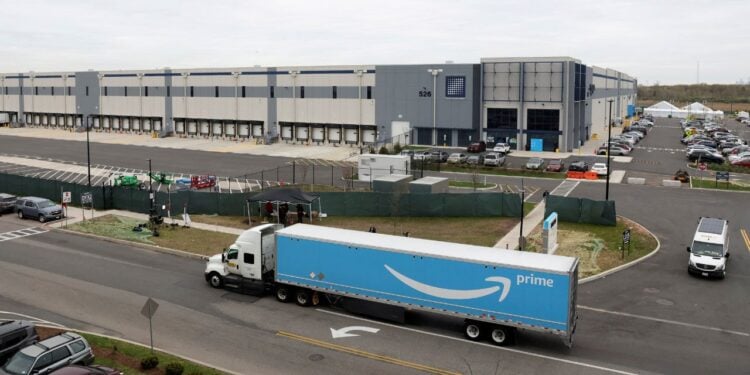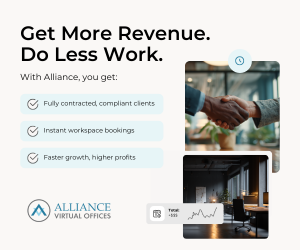Thousands of Amazon workers walked off the job on Thursday morning, in the crucial final days of the holiday season, after union officials said the retailer failed to come to the bargaining table to negotiate contracts.
The strike is a challenge to Amazon’s operations as it races to fulfill orders during its busiest season of the year, although union-represented facilities represent only about 1% of Amazon’s hourly workforce.
In the New York City area, for example, the company has multiple warehouses and smaller delivery depots.
The International Brotherhood of Teamsters said unionized workers at facilities in New York City; Skokie, Illinois; Atlanta, San Francisco and southern California will join the picket line to seek contracts guaranteeing better wages and work conditions.
The Teamsters union has said it represents about 10,000 workers at 10 of the company’s U.S. facilities. Workers at seven of those facilities will walk out on Thursday, the Teamsters said.
A spokesperson for Amazon said the Teamsters union had for more than a year claimed to represent thousands of Amazon employees and drivers.
“They don’t, and this is another attempt to push a false narrative,” said spokesperson Kelly Nantel.
“The truth is that the Teamsters have actively threatened, intimidated, and attempted to coerce Amazon employees and third-party drivers to join them, which is illegal and is the subject of multiple pending unfair labor practice charges against the union,” Nantel added.
Teamsters did not immediately respond to an emailed request for comment.
The union had given Amazon a deadline of Sunday to begin negotiations, and workers at facilities voted recently to authorize a strike.
Teamsters local unions are also putting up picket lines at hundreds of Amazon Fulfillment Centers nationwide, the union said in a statement on Wednesday.
Observers said Amazon is unlikely to come to the table to bargain, calculating it could open the door to additional union actions.
“Amazon clearly has developed a strategy of ignoring their workers’ rights to collectively organize and negotiate,” said Benjamin Sachs, a Harvard Law School professor of labor and industry.
He noted that more than two years after workers at a Staten Island warehouse became the first in the United States to vote to unionize, Amazon still has not recognized the group.
Right to Organize
Amazon, which has said it prefers direct relationships with workers, has challenged union drives while saying workers have the right to organize.
The company has filed objections with the National Labor Relations Board (NLRB) over the 2022 Staten Island election, alleging bias among agency officials, among other issues. Further, Amazon challenged the constitutionality of the NLRB itself in a September federal lawsuit.
The Seattle-based company has also said the Teamsters “attempted to coerce” workers illegally to join the union.
Amazon spokesperson Nantel said company employees have the choice of whether or not to join a union, adding it favoured opportunities for each person to be respected and to have their voice heard by working directly with a team.
Nantel also said the company had increased the starting minimum wage over the last six years.
The Teamsters said the Staten Island warehouse could join the strike at any time, as well as another southern California facility that had earlier voted to join the walkout.
Amazon is unlikely, at least initially, to come to the table with the Teamsters because there is little legal pressure to do so, said Jake Rosenfeld, a sociology professor at Washington University in St. Louis who has studied unions. He noted that there has been no apparent penalty to Amazon for ignoring the Staten Island workers’ demands.
“It’s been a very successful strategy, the work continues there and there is still no contract,” said Rosenfeld.
In recent years, Amazon.com has faced worker walkouts in Spain and Germany, among other regions, over pay and working conditions.
As the world’s second-largest private employer after Walmart, Amazon has long been a target for unions. Some workers have said Amazon’s emphasis on greater speed and efficiency can lead to injuries, while Amazon has said it pays industry-leading wages and regularly introduces automation designed to reduce repetitive stress.
The company will face other union actions in the months ahead. Workers at a Philadelphia Whole Foods in November filed to hold a union election, the first since Amazon acquired the grocery chain in 2017.
Last month, an administrative judge ordered a third union election at an Alabama warehouse after ruling Amazon had acted unlawfully to thwart unionization there.
Earlier this year, Amazon announced a $2.1 billion investment to raise pay for fulfillment and transportation employees in the U.S., increasing base wages for employees by at least $1.50 to around $22 per hour, a roughly 7% increase.
(Additional reporting by Matthias Inverardi in Duesseldorf. Reporting by Greg Bensinger and Gursimran Kaur. Editing by Stephen Coates and Mark Potter)


 Dr. Gleb Tsipursky – The Office Whisperer
Dr. Gleb Tsipursky – The Office Whisperer Nirit Cohen – WorkFutures
Nirit Cohen – WorkFutures Angela Howard – Culture Expert
Angela Howard – Culture Expert Drew Jones – Design & Innovation
Drew Jones – Design & Innovation Jonathan Price – CRE & Flex Expert
Jonathan Price – CRE & Flex Expert













